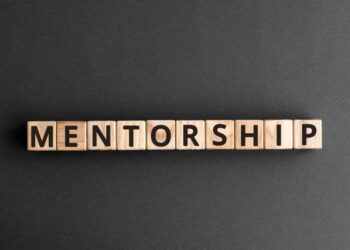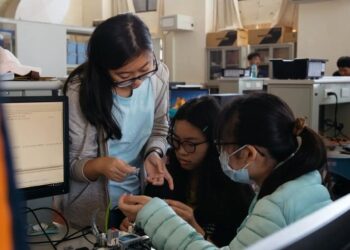The traditional focus of education has long centered on grades as the primary, often sole, indicator of student achievement and understanding. While grades offer a convenient snapshot of performance, they frequently fall short in providing a comprehensive picture of a student’s true learning journey, growth, or the mastery of complex skills essential for the 21st century. As educational paradigms shift towards more holistic and personalized approaches, the concept of assessment is undergoing a profound evolution. This means moving beyond mere numerical or letter grades to embrace richer, more nuanced methods that genuinely enhance learning, provide meaningful feedback, and prepare students for a dynamic future. This comprehensive article delves into the imperative for this evolution in educational assessment, exploring the limitations of traditional grading, the benefits of more progressive approaches, innovative strategies for implementation, and the challenges inherent in transforming a deeply entrenched system.
The Limitations of Traditional Grading

For decades, the standard grading system — typically A-F or numerical percentages — has served as the bedrock of academic evaluation. While seemingly straightforward, this system presents several significant limitations that hinder genuine learning and equitable assessment.
A. Lack of Specific Feedback: A single grade, whether a ‘B’ or an ‘85%’, provides little to no specific information about what a student has truly mastered or where they need to improve. It’s a summative judgment without formative guidance, often leaving students and parents guessing about the pathways to progress.
B. Focus on Rote Memorization Over Deep Understanding: Traditional tests often emphasize recalling facts and figures, encouraging students to memorize information for the short term rather than fostering deep conceptual understanding or the ability to apply knowledge in new contexts. This can lead to “teaching to the test” rather than genuine intellectual development.
C. Punitive Nature and Fear of Failure: When grades are the sole measure of success, the focus shifts from learning to performance pressure. Students may become afraid to take risks, ask questions, or make mistakes, fearing that it will negatively impact their grade. This can stifle curiosity and inhibit a growth mindset.
D. Limited Scope for Diverse Learning Styles: Standardized tests and traditional assignments often favor certain learning styles (e.g., strong readers, good memorizers) and may not accurately assess the abilities of students who learn differently, such as visual, kinesthetic, or experiential learners.
E. Ignoring the Learning Process: Traditional grades typically reflect only the final product or performance, neglecting the effort, progress, perseverance, and challenges faced during the learning process itself. A student who struggles initially but makes significant gains may still receive a low grade, which doesn’t reflect their growth.
F. Inadequate for 21st-Century Skills: Skills vital for today’s world – such as collaboration, creativity, critical thinking, communication, and adaptability – are difficult to capture and quantify with a single letter or number grade. Traditional systems often fail to assess these crucial competencies.
G. Comparison and Competition Over Collaboration: An overemphasis on grades can foster unhealthy competition among students, undermining opportunities for collaborative learning and peer support. The focus becomes “beating” others rather than collective knowledge building.
H. Subjectivity and Inconsistency: Despite rubrics, grades can sometimes be influenced by teacher bias, inconsistent application of standards, or external factors not related to learning. This can lead to a lack of fairness and reliability across different classrooms or schools.
I. Stress and Mental Health Impacts: The constant pressure to achieve high grades can contribute to significant stress, anxiety, and mental health challenges among students, detracting from their overall well-being and genuine enjoyment of learning.
The Vision of Evolved Assessment

Moving beyond traditional grading means embracing a philosophy of assessment that prioritizes learning itself. This vision seeks to make assessment a tool for growth, feedback, and understanding, rather than just a final judgment.
A. Assessment FOR Learning (Formative Assessment): The primary purpose shifts from “assessment OF learning” (summative) to “assessment FOR learning” (formative). This means using ongoing assessment data to inform instruction, guide student learning, and provide immediate, actionable feedback that helps students improve during the learning process.
B. Focus on Mastery and Growth: Instead of penalizing mistakes, evolved assessment emphasizes mastery-based learning, where students are given multiple opportunities to demonstrate understanding and progress at their own pace until they achieve proficiency. Growth over time becomes as important, if not more important, than a single performance snapshot.
C. Comprehensive Skill Evaluation: Assessment expands to include a wider range of skills beyond just content knowledge. Critical thinking, problem-solving, creativity, collaboration, communication, and digital literacy are actively assessed and nurtured.
D. Student Agency and Self-Assessment: Students become active participants in their own assessment process. They learn to reflect on their learning, identify their strengths and weaknesses, set goals, and monitor their own progress. This fosters self-regulation and metacognitive skills.
E. Authentic and Performance-Based Tasks: Assessments move away from artificial, decontextualized tests to include authentic tasks that mirror real-world challenges. This could involve projects, presentations, simulations, portfolios, and practical demonstrations of skills.
F. Rich, Descriptive Feedback: Grades are supplemented or replaced by detailed, descriptive feedback that highlights specific strengths, areas for improvement, and clear next steps. This feedback is timely, constructive, and actionable, guiding students towards mastery.
G. Equity and Inclusivity: Evolved assessment aims to be more equitable, accommodating diverse learning styles, cultural backgrounds, and individual needs. It seeks to provide multiple pathways for students to demonstrate their learning, reducing bias inherent in standardized measures.
H. Clear Learning Targets: Students and teachers have a shared understanding of what success looks like. Learning objectives are clearly articulated, and rubrics provide transparent criteria for evaluation, empowering students to understand what is expected of them.
Innovative Strategies for Modern Assessment
Implementing this evolved vision requires adopting a range of innovative assessment strategies that go beyond traditional tests and essays.
A. Rubric-Based Assessment: Detailed rubrics clearly define criteria for different levels of performance (e.g., beginning, developing, proficient, exemplary) for specific assignments or skills. This provides transparency for students and consistency for evaluators, enabling targeted feedback.
B. Portfolios: Students curate collections of their work over time, showcasing their learning journey, growth, and mastery of skills. Portfolios can include various artifacts like written pieces, art projects, multimedia presentations, reflections, and peer feedback. They demonstrate holistic development.
C. Project-Based Learning (PBL) Assessments: In PBL, students engage in extended, interdisciplinary projects that culminate in a public product or presentation. Assessment focuses on the process of inquiry, collaboration, critical thinking, and the quality of the final product, often evaluated using comprehensive rubrics.
D. Performance Tasks and Simulations: Students demonstrate their understanding by performing a task or participating in a simulation that mimics a real-world scenario. Examples include conducting a scientific experiment, performing a historical role-play, or coding a functional program.
E. Self-Assessment and Peer Assessment: Students are taught to evaluate their own work and provide constructive feedback to their peers using established criteria. This develops critical reflection skills, self-awareness, and the ability to analyze others’ work effectively.
F. Conferencing and Dialogic Feedback: Teachers engage in one-on-one or small-group conversations with students to discuss their work, provide personalized feedback, answer questions, and collaboratively set goals for improvement. This fosters a supportive learning relationship.
G. Exit Tickets and Quick Checks for Understanding: Brief, informal assessments at the end of a lesson or activity (e.g., one-minute papers, thumbs up/down, brief quizzes) provide immediate feedback to teachers on student comprehension, allowing for real-time adjustments to instruction.
H. Digital Assessment Tools and Analytics: Technology offers powerful tools for assessment. Learning management systems (LMS) can track progress, provide automated feedback, and offer analytics on student performance. Educational apps can provide adaptive quizzes and gamified assessments that make learning engaging.
I. Competency-Based Assessment: Instead of time-bound courses, students advance based on their demonstrated mastery of specific competencies. This allows for personalized pacing and ensures that students truly understand concepts before moving on.
J. Badging and Micro-credentials: Digital badges or micro-credentials can be awarded for the mastery of specific skills or completion of short, focused learning units. This provides granular recognition for achievements beyond traditional course grades.
Challenges in Implementing Evolved Assessment
Transforming assessment practices is a complex undertaking, requiring significant shifts in mindset, resources, and established procedures.
A. Teacher Training and Professional Development: Educators need extensive training in new assessment methodologies, rubric design, providing effective feedback, and facilitating self/peer assessment. This represents a significant investment of time and resources.
B. Time and Workload for Educators: Designing, implementing, and providing detailed feedback on authentic assessments can be far more time-consuming than traditional grading. This requires schools to re-evaluate teacher workloads and provide adequate support.
C. Parental Understanding and Acceptance: Parents are often accustomed to traditional letter grades and may initially resist systems that seem less straightforward. Clear communication, education, and demonstrations of the benefits are crucial for gaining parental buy-in.
D. Systemic Resistance to Change: Educational institutions, state policies, and university admissions criteria are often deeply entrenched in traditional grading systems. Shifting this requires systemic change and collaboration across various levels of the education sector.
E. Standardization and Comparability: For large-scale assessments or when comparing student performance across different schools or districts, finding ways to standardize and ensure comparability of diverse assessment methods can be challenging.
F. Resource Allocation: Investing in new assessment tools, technologies, and professional development programs requires significant financial commitment from schools and districts.
G. Ensuring Reliability and Validity: While traditional tests have known issues, developing new assessment methods that are demonstrably reliable (consistent) and valid (measure what they intend to measure) requires careful design and piloting.
H. Addressing Diverse Student Needs: Creating assessments that are equitable and accessible for students with special needs, learning disabilities, or language barriers requires thoughtful design and accommodations.
I. Shifting Student Mindsets: Students accustomed to a grade-driven system may initially struggle to adapt to an environment where mistakes are opportunities for learning and where feedback is prioritized over a single score.
J. Cultural and Societal Expectations: In many cultures, academic success is strongly equated with high grades. Changing these deeply ingrained societal expectations requires broad public awareness and education campaigns.
The Future of Assessment as a Growth Catalyst
The evolution of assessment is not just about changing how we measure learning; it’s about fundamentally changing how learning happens. As we move further into the 21st century, the need for individuals who are adaptable, critical thinkers, creative problem-solvers, and effective collaborators will only intensify. Traditional grading alone cannot adequately cultivate or measure these vital attributes.
The future of education envisions assessment as an integral, dynamic part of the learning process itself. It will be:
- Personalized: Tailored to individual student needs, progress, and learning styles.
- Continuous: Embedded throughout the learning journey, providing ongoing feedback and opportunities for improvement.
- Holistic: Evaluating a broad spectrum of knowledge, skills, and dispositions.
- Transparent: With clear criteria and expectations shared between students and educators.
- Empowering: Fostering student agency, self-reflection, and a love for lifelong learning.
Conclusion
By transforming assessment from a judge to a guide, we empower students to take ownership of their learning, embrace challenges, and develop the resilience and competencies necessary to thrive in an ever-changing world. This shift is not merely an academic exercise; it is an essential investment in creating a generation of engaged, capable, and confident learners who are truly prepared for the complexities and opportunities that lie beyond the classroom. The evolution of assessment is, in essence, the evolution of learning itself.












